2018-07-19 - Nº 168

Editorial
Esta é a Newsletter Nº 168 que se apresenta com o mesmo formato que as anteriores. Se gostar da Newsletter partilhe-a!
Todas as Newsletters encontram-se indexadas no link.
Esta Newsletter tem os seguintes tópicos:
Faz anos hoje que nascia, em 1814, Samuel Colt. Este fabricante norte-americano de armas de fogo popularizou o revólver Colt 45 e outras armas de fogo. Enquanto marinheiro aprendiz, ele fez um modelo de madeira de uma pistola automática de revólver (talvez inspirada na roda do navio) e ao retornar aos EUA fez modelos de metal, pediu patentes e fez uma tornee como "Dr. Coult", ganhando assim o dinheiro que precisava para começar a fabricação. A sua fábrica foi uma das mais inovadoras no uso da técnica de produção em massa. O seu estilo de vendas e auto-promoção de Barnum também popularizou o seu produto.
Faz também anos hoje que nascia, em 1846, Edward Charles Pickering. Nasceu em Boston, Massachusetts, este físico e astrónomo dos EUA. Depois de se formar em Harvard, leccionou física por dez anos no MIT, onde construiu o primeiro laboratório de física instrucional dos Estados Unidos. Aos 30 anos, ele dirigiu o Harvard College Observatory por 42 anos. As suas observações foram assistidas por uma equipa de mulheres, incluindo Annie Jump Cannon. Ele introduziu o uso do fotómetro meridiano para medir a magnitude das estrelas e estabeleceu a Harvard Photometry (1884), o primeiro grande catálogo fotométrico. Ao estabelecer uma estação no Peru (1891) para fazer as fotografias do sul, ele publicou o primeiro mapa fotográfico de todo o céu (1903).
Por fim, faz anos hoje que nascia, em 1865, Georges Friedel. Este Cristalógrafo francês formulou leis básicas sobre a morfologia externa e estrutura interna dos cristais. Ele era o filho de Charles Friedel (1832-1899), mineralogista francês e químico orgânico. Ele reconheceu, em 1892, que os cristais líquidos tinham três tipos de organização (mesofases). Em 1893, tornou-se professor na Escola Nacional das Minas em Saint-Etienne.
Nesta semana que passou a Rolls-Royce revelou um conceito de veículo de descolagem e aterragem vertical (EVTOL) no Farnborough International Airshow 2018. O projecto pode ser adaptado para transporte pessoal, transporte público, logística e aplicações militares e é baseado sobre tecnologias que já existem ou estão actualmente em desenvolvimento. Pode levar para o céu logo no início dos anos 2020.
Na Newsletter desta semana apresentamos diversos projetos de maker. É apresentada a revista hackspace nº9.
 João Alves ([email protected])
João Alves ([email protected])
O conteúdo da Newsletter encontra-se sob a licença  Creative Commons Attribution-NonCommercial-ShareAlike 4.0 International License.
Creative Commons Attribution-NonCommercial-ShareAlike 4.0 International License.
Novidades da Semana

Blue sky thinking
"The Rolls-Royce EVTOL project Rolls-Royce has unveiled a concept electric vertical take-off and landing (EVTOL) vehicle at the Farnborough International Airshow 2018. The design could be adapted for personal transport, public transport, logistics and military applications and is based upon technologies that already exist or are currently under development. It could take to the skies as soon as the early 2020s. The Rolls-Royce EVTOL project is part of our strategy to ‘champion electrification’ and realise our ambition to become the world’s leading industrial technology company. It builds upon experience gained providing hybrid electric propulsion for trains, naval vessels and other applications, and our expertise in gas turbines, VTOL technology, systems analytics and aerospace regulation and certification. We would expect any commercial introduction of the EVTOL to involve working in collaboration with airframers and will seek a range of strategic partners for aspects of the electrical system." [...]
Outras Notícias
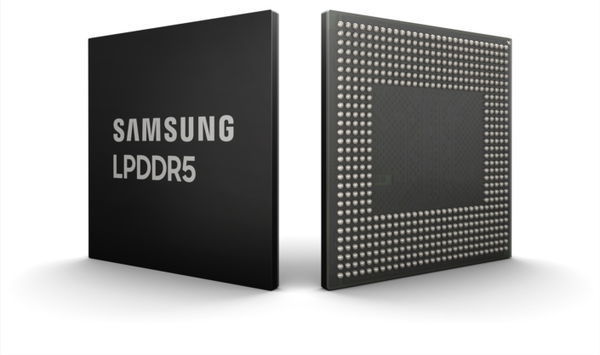
Samsung Electronics Announces Industry's First 8Gb LPDDR5 DRAM for 5G and AI-powered Mobile Applications
"Samsung Electronics, the world leader in advanced memory technology, today announced that it has successfully developed the industry’s first 10-nanometer (nm) class* 8-gigabit (Gb) LPDDR5 DRAM. Since bringing the first 8Gb LPDDR4 to mass production in 2014, Samsung has been setting the stage to transition to the LPDDR5 standard for use in upcoming 5G and Artificial Intelligence (AI)-powered mobile applications. The newly-developed 8Gb LPDDR5 is the latest addition to Samsung’s premium DRAM lineup, which includes 10nm-class 16Gb GDDR6 DRAM (in volume production since December 2017) and 16Gb DDR5 DRAM (developed in February). “This development of 8Gb LPDDR5 represents a major step forward for low-power mobile memory solutions,” said Jinman Han, senior vice president of Memory Product Planning & Application Engineering at Samsung Electronics. “We will continue to expand our next-generation 10nm-class DRAM lineup as we accelerate the move toward greater use of premium memory across the global landscape.” The 8Gb LPDDR5 boasts a data rate of up to 6,400 megabits per second (Mb/s), which is 1.5 times as fast as the mobile DRAM chips used in current flagship mobile devices (LPDDR4X, 4266Mb/s). With the increased transfer rate, the new LPDDR5 can send 51.2 gigabytes (GB) of data, or approximately 14 full-HD video files (3.7GB each), in a second." [...]

Intel Breaks Guinness World Records Title for Drone Light Shows in Celebration of 50th Anniversary
"In celebration of Intel’s 50th anniversary, the company flew 2,018 Intel® Shooting Star™ drones over its Folsom, California, facility, setting a new Guinness World Records™ title for the most unmanned aerial vehicles airborne simultaneously. " [...]
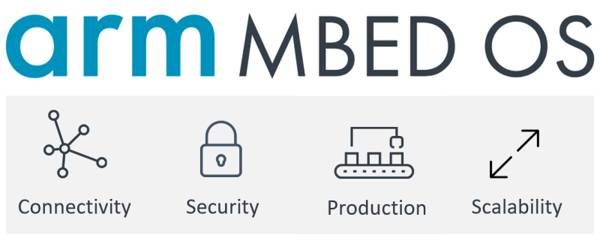
Mbed OS 5.9.3 released
"We are pleased to announce the Mbed OS 5.9.3 release is now available. This is the latest patch release based on the feature set that Mbed OS 5.9 introduces. Summary In this release, we have enabled the ability to determine the Mbed OS release version from within compiled code. Nanostack has been updated with the option to use the global event queue to save on memory usage. ST and Silicon Labs brought in various clock changes and updated to their targets. Mbed OS tools now have the ability to source other C++ file extensions, along with a plethora of smaller changes." [...]

Reduce Costs and Bill of Materials with Single Power Monitoring IC that Measures Power from 0V to 32V
"Managing and reducing power consumption is crucial in low-voltage, high-power applications such as Field-Programmable Gate Arrays (FPGAs), Graphics Processing Units (GPUs) and embedded computing devices. These devices must first accurately measure power before they can manage it, but precision power measurement solutions are often costly and require multiple ICs or power configurations to measure different rails. To meet these needs, Microchip Technology Inc. (NASDAQ: MCHP) today introduced new two- and three-channel power monitoring devices that measure from 0V to 32V on a single chip, offering designers solutions that are easy to adopt and improve power measurement accuracy. The two-channel device is also the industry’s first with native 16-bit resolution, providing leading flexibility across a wide measurement range. The PAC1932/33 devices include precisely what is needed to measure power on a single Integrated Circuit (IC), integrating multiple channels in a single package for applications such as Point of Sale (POS) systems, ATMs and building automation. This reduces costs for system designers while also consolidating their Bill of Materials (BOM), as the measurement of sub 1V to 20V voltage rails normally require separate components to measure each rail efficiently." [...]
Ciência e Tecnologia
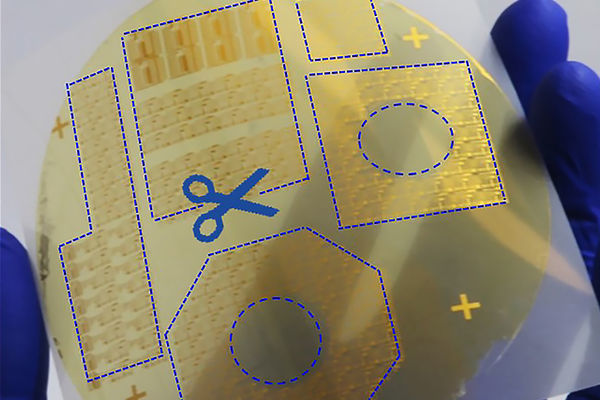
Electronic stickers to streamline large scale 'Internet of Things'
"Billions of objects ranging from smartphones and watches to buildings, machine parts and medical devices have become wireless sensors of their environments, expanding a network called the “Internet of Things.” As society moves toward connecting all objects to the internet — even furniture and office supplies — the technology that enables these objects to communicate and sense each other will need to scale up. Researchers at Purdue University and the University of Virginia have developed a new fabrication method that makes tiny, thin-film electronic circuits peelable from a surface. The technique not only eliminates several manufacturing steps and the associated costs, but also allows any object to sense its environment or be controlled through the application of a high-tech sticker. Eventually, these stickers could also facilitate wireless communication. The researchers demonstrate capabilities on various objects in a paper recently published in the Proceedings of the National Academy of Sciences. “We could customize a sensor, stick it onto a drone, and send the drone to dangerous areas to detect gas leaks, for example," said Chi Hwan Lee, Purdue assistant professor of biomedical engineering and mechanical engineering." [...]

A step closer to quantum computers: NUS researchers show how to directly observe quantum spin effects
"Scientists at NUS have discovered a new way to closely look at the electronic quantum behaviour of materials, giving a deeper understanding of how they could be used for future quantum computing applications With companies like Google, Microsoft, and IBM all racing to create the world’s first practical quantum computer, scientists worldwide are exploring the potential materials that could be used to build them. Now, Associate Professor Yang Hyunsoo and his team from the Department of Electrical and Computer Engineering at the National University of Singapore (NUS) Faculty of Engineering have demonstrated a new method which could be used to bring quantum computing closer to reality. “The NUS team, together with our collaborators from Rutgers, The State University of New Jersey in the United States and RMIT University in Australia, showed a practical way to observe and examine the quantum effects of electrons in topological insulators and heavy metals which could later pave the way for the development of advanced quantum computing components and devices,” explained Assoc Prof Yang. The findings of the study were published in the scientific journal Nature Communications in June 2018. The advantage of quantum computers Quantum computers are still in the early stages of development but are already displaying computing speeds millions of times faster than traditional technologies. As such, it is predicted that when quantum computing becomes more readily available, it will be able to answer some of the world’s toughest questions in everything from finance to physics." [...]
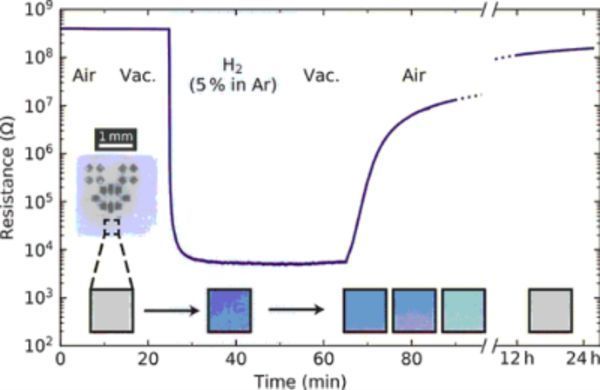
A hydrogen sensor that works at room temperature
"Researchers at TU Delft have developed a highly sensitive and versatile hydrogen sensor that works at room temperature. The sensor is made of a thin layer of a material called tungsten trioxide. Hydrogen has the potential to replace fossil fuels as the most important energy carrier in the near future. It has the highest energy per mass of any fuel and can be produced sustainably. However, it is also flammable, making sensors that can detect it an absolute necessity for the transition to a hydrogen economy. Various types of hydrogen sensors already exist, but most of these sensors require high temperatures in order to function." [...]
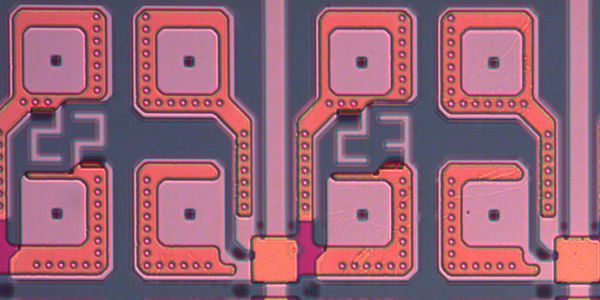
Electrical Contact to Molecules in Semiconductor Structures Established for the First Time
"Electrical circuits are constantly being scaled down and extended with specific functions. A new method now allows electrical contact to be established with simple molecules on a conventional silicon chip. The technique promises to bring advances in sensor technology and medicine, as reported in the journal Nature by chemists from the University of Basel and researchers from IBM Research – Zurich in Rüschlikon. To further develop semiconductor technology, the field of molecular electronics is seeking to manufacture circuit components from individual molecules instead of silicon. Because of their unique electronic properties, molecules are suited to applications that cannot be implemented using conventional silicon technology. However, this requires reliable and inexpensive methods for creating electrical contacts at the two ends of a molecule." [...]

The Future Of Electronics Is Chemical
"We can’t cram any more processing power into silicon-based computer chips. But a paper published in Nature overnight reveals how we can make electronic devices 10 times smaller, and use molecules to build electronic circuits instead. We’re reaching the limits of what we can do with conventional silicon semiconductors. In order for electronic components to continue getting smaller we need a new approach. Molecular electronics, which aims to use molecules to build electronic devices, could be the answer. But until now, scientists haven’t been able to make a stable device platform for these molecules to sit inside which could reliably connect with the molecules, exploit their ability to respond to a current, and be easily mass-produced." [...]
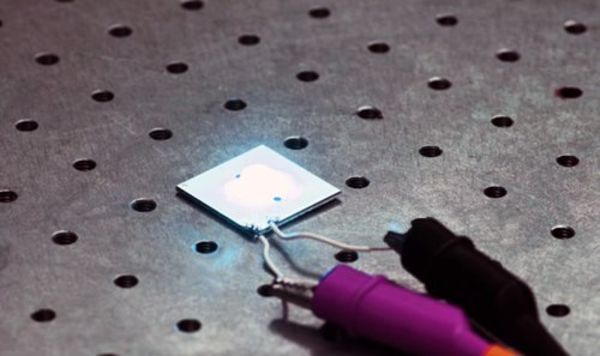
Quantum Dot White LEDs Achieve Record Efficiency
"Researchers have demonstrated nanomaterial-based white-light-emitting diodes (LEDs) that exhibit a record luminous efficiency of 105 lumens per watt. Luminous efficiency is a measure of how well a light source uses power to generate light. With further development, the new LEDs could reach efficiencies over 200 lumens per watt, making them a promising energy-efficient lighting source for homes, offices and televisions. “Efficient LEDs have strong potential for saving energy and protecting the environment,” said research leader Sedat Nizamoglu, Koç University, Turkey. “Replacing conventional lighting sources with LEDs with an efficiency of 200 lumens per watt would decrease the global electricity consumed for lighting by more than half. That reduction is equal to the electricity created by 230 typical 500-megawatt coal plants and would reduce greenhouse gas emissions by 200 million tons.” The researchers describe how they created the high-efficiency white LEDs in Optica, The Optical Society's journal for high impact research." [...]
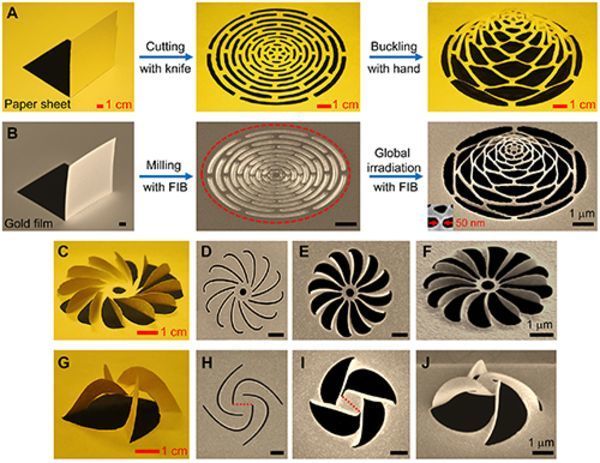
Nano-Kirigami: "Paper-cut" Provides Model for 3D Intelligent Nanofabrication
"Kirigami (also called "paper-cuts" or "jianzhi") is one of the most traditional Chinese folk arts. It is widely used in window decorations, gift cards, festivals, and ceremonies, etc. Kirigami involves cutting and folding flat objects into 3D shapes. Recently, the techniques of this ancient art have been used in various scientific and technological fields, including designs for solar arrays, biomedical devices and micro-/nano- electromechanical systems (MEMS/NEMS). Dr. LI Jiafang, from the Institute of Physics (IOP), Chinese Academy of Sciences, has recently formed an international team to apply kirigami techniques to advanced 3D nanofabrication. Inspired by a traditional Chinese kirigami design called "pulling flower," the team developed a direct nano-kirigami method to work with flat films at the nanoscale." [...]

Berkeley engineers develop origami electronics from cheap, foldable paper
"UC Berkeley engineers have given new meaning to the term “working paper.” Using inexpensive materials, they have fabricated foldable electronic switches and sensors directly onto paper, along with prototype generators, supercapacitors and other electronic devices for a range of applications. Research to develop paper electronics has accelerated in the last ten years. Besides its availability and low cost, paper offers an intriguing potential: simply folding it could switch circuits on and off or otherwise change their activity — a kind of electronic origami. But most efforts to fabricate electrodes onto paper with sufficient conductivity for practical use have employed expensive metals such as gold or silver as the conducting material, swamping the potential savings of paper as a substrate. This new technology uses the inexpensive element molybdenum as the source of the conducting metal. It is added to gelatin in solution and binds to carbon in the gelatin." [...]
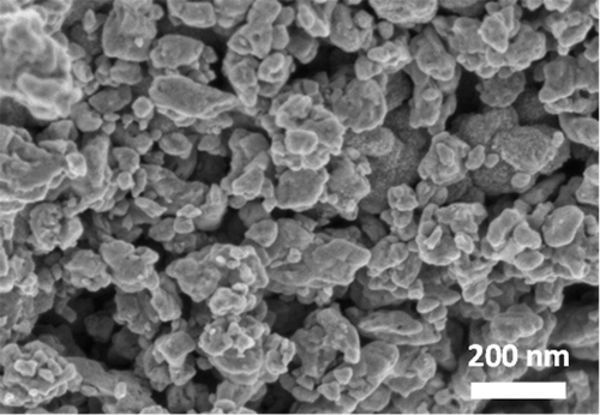
Barium ruthenate: A high-yield, easy-to-handle perovskite catalyst for the oxidation of sulfides
"Researchers at Tokyo Tech have developed a ruthenium-based perovskite catalyst1 that shows strong activity even at low temperatures (down to 313 K). The reusable catalyst does not require additives, meaning that it can prevent the formation of toxic by-products. The oxidation of sulfides is a commercially important process with broad applications ranging from chemicals production to environmental management. A research group led by Keigo Kamata and Michikazu Hara of Tokyo Institute of Technology (Tokyo Tech) has succeeded in developing a barium ruthenate (BaRuO3) perovskite — the first catalyst of its kind shown to be capable of the selective oxidation of sulfides under mild conditions, with molecular oxygen (O2) as the only oxidant and without the need for additives. Reporting their findings in ACS Applied Materials & Interfaces, the researchers state that BaRuO3 has three advantages over conventional catalysts. Firstly, it exhibits high performance even at 313 K, a temperature much lower than the 373–423 K range reported in previous systems including other ruthenium- and manganese-based catalysts." [...]

Fabrication technology in the fourth dimension
"Scientists use the term 4D printing to refer to the simple production of objects that can transform their shape at different times. Researchers at ETH Zurich have now taken this approach one major step further by developing a construction principle that can produce load-bearing and predictable structures. 3D printers have become a standard fixture in many research laboratories – and now a select number of researchers are already looking to add yet another dimension to the technology: time. Kristina Shea, head of the Engineering Design and Computing Lab at ETH Zurich, is one of these scientists. 4D printing creates moveable and shape variable objects such as flat components that can be folded into three-dimensional objects at a later point, or even objects that can change their shape as a function of external influences. Professor Shea and her group have now taken this approach one step further by developing a construction principle that allows them to control the deformation." [...]

Robot prototype will let you feel how it's 'feeling'
"In 1872, Charles Darwin published his third major work on evolutionary theory, “The Expression of the Emotions in Man and Animals,” which explores the biological aspects of emotional life. In it, Darwin writes: “Hardly any expressive movement is so general as the involuntary erection of the hairs, feathers and other dermal appendages … it is common throughout three of the great vertebrate classes.” Nearly 150 years later, the field of robotics is starting to draw inspiration from those words. “The aspect of touch has not been explored much in human-robot interaction, but I often thought that people and animals do have this change in their skin that expresses their internal state,” said Guy Hoffman, assistant professor and Mills Family Faculty Fellow in the Sibley School of Mechanical and Aerospace Engineering (MAE). Inspired by this idea, Hoffman and students in his Human-Robot Collaboration and Companionship Lab have developed a prototype of a robot that can express “emotions” through changes in its outer surface. Its skin covers a grid of texture units (TUs) whose shapes are controlled by fluidic actuators, based on a design developed in the lab of Hoffman’s MAE colleague Rob Shepherd. Their work is detailed in a paper, “Soft Skin Texture Modulation for Social Robots,” presented in April at the International Conference on Soft Robotics in Livorno, Italy." [...]

Researchers enable transmission of specific colors of light over long distances
"New nanoscale light switch is a step toward light-based computers Researchers from the University of North Carolina at Chapel Hill have reached a new milestone on the way to optical computing, or the use of light instead of electricity for computing. They explored a new way to select and send light of a specific color using long silicon wires that are several hundred nanometers in diameter (about 1,000 times smaller than a human hair) and their work enabled a new type of nanoscale “light switch” that can turn on and off the transmission of one color of light over very long distances. The research paper, written by chemistry professor James Cahoon and graduate student Seokhyoung Kim at the University of North Carolina at Chapel Hill, along with collaborators at Korea University, was published in the journal Nature Communications on July 17. Optical computing technology promises many benefits. Swapping electrons for light-based technology would mean that the computers of the future won’t overheat and will run much faster. “In the past there hasn’t been a controlled method for selectively sending light down nanoscale wires, so optical technology has either used much larger structures or wasted a lot of light in the process,” said James Cahoon, senior corresponding author and associate professor of chemistry in the College of Arts and Sciences at UNC-Chapel Hill." [...]

Materials processing tricks enable engineers to create new laser material
"By doping alumina crystals with neodymium ions, engineers at the University of California San Diego have developed a new laser material that is capable of emitting ultra-short, high-power pulses—a combination that could potentially yield smaller, more powerful lasers with superior thermal shock resistance, broad tunability and high-duty cycles. To achieve this advance, engineers devised new materials processing strategies to dissolve high concentrations of neodymium ions into alumina crystals. The result, a neodymium-alumina laser gain medium, is the first in the field of laser materials research. It has 24 times higher thermal shock resistance than one of the leading solid-state laser gain materials. The research was published this month in the journal Light: Science & Applications. The team will also present their work at the 2018 SPIE Conference, Aug. 19 to 23 in San Diego." [...]

Developing Microrobotics for Disaster Recovery and High-Risk Environments
"SHRIMP program seeks to advance the state-of-the art in micro-to-milli robotics platforms and underlying technology Imagine a natural disaster scenario, such as an earthquake, that inflicts widespread damage to buildings and structures, critical utilities and infrastructure, and threatens human safety. Having the ability to navigate the rubble and enter highly unstable areas could prove invaluable to saving lives or detecting additional hazards among the wreckage. Partnering rescue personnel with robots to evaluate high-risk scenarios and environments can help increase the likelihood of successful search and recovery efforts, or other critical tasks while minimizing the threat to human teams. “Whether in a natural disaster scenario, a search and rescue mission, a hazardous environment, or other critical relief situation, robots have the potential to provide much needed aide and support,” said Dr. Ronald Polcawich, a DARPA program manager in the Microsystems Technology Office (MTO). “However, there are a number of environments that are inaccessible for larger robotic platforms. Smaller robotics systems could provide significant aide, but shrinking down these platforms requires significant advancement of the underlying technology.” Technological advances in microelectromechanical systems (MEMS), additive manufacturing, piezoelectric actuators, and low-power sensors have allowed researchers to expand into the realm of micro-to-milli robotics." [...]
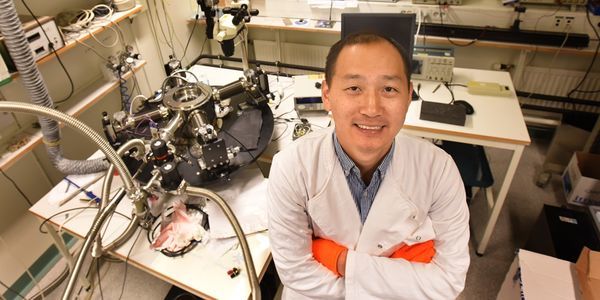
How to build efficient organic solar cells
"Twenty-five researchers from seven research institutes have put their heads together to draw up rules for designing high-efficiency organic solar cells. The research is led by Feng Gao, associate professor at LiU. An article have been published in Nature Materials. Organic solar cells, made from carbon-based materials, present unique advantages compared with other solar cell technologies. For example, they can be manufactured through low-cost printing technologies, and they can be made semi-transparent with selectable colours, which can be used architecturally in building integration. Their flexibility and low weight make them perfect for powering the sensors for the internet of things applications." [...]
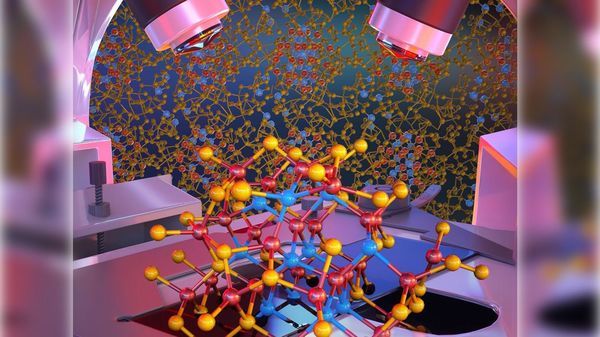
Nanocrystal links could lead to better electronics, scientists say
"UChicago, Argonne scientists find atomic explanation for easing electrons’ paths Chemists and engineers today are very interested in a kind of nanotechnology enabled by tiny islands of nanoparticles called “colloidal nanocrystals.” They can be made out of abundant and non-toxic materials, and they can be easily tweaked to have a number of different properties as a function of their size. Depending on how they’re built, colloidal nanocrystals could be made into solar panels, electronics or optical devices. But all of these applications require making nanocrystals friendly places for electrons to travel along. A new study published in Nature Nanotechnology helps fill in the cracks for scientists trying to use nanocrystals to design better electronic and optoelectronic devices. According to research by University of Chicago, Argonne National Laboratory and Max Planck Institute for Iron Research scientists, inorganic links between the nanoparticles themselves are changing and reforming on the surface of the nanoparticles. The team focused on the links between nanoparticles." [...]
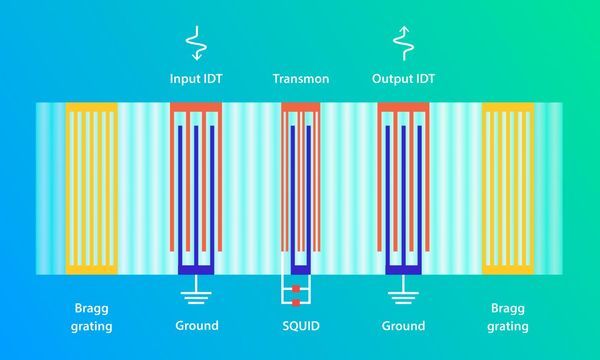
Researchers couple artificial atom to acoustic resonator
"Researchers from Russia and Britain have demonstrated an artificial quantum system, in which a quantum bit interacts with an acoustic resonator in the quantum regime. This allows the familiar effects of quantum optics to be studied on acoustic waves and enables an alternative approach to quantum computer design, which is based on acoustics and could make quantum computers more stable and compact. The paper reporting the results was published in Physical Review Letters. "We are the first to demonstrate an interaction between a qubit and a surface acoustic wave resonator in the quantum regime. Previously, resonators of this kind were studied, but without a qubit. Likewise, qubits with surface acoustic waves were studied, but those were running waves, without a resonator." [...]
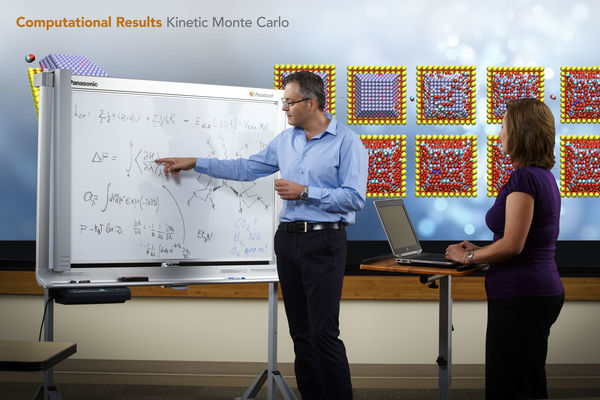
New approaches to chemical and electrical energy conversions
"PNNL receives additional funding for electrocatalyst research to store and release energy For the second time, the U.S. Department of Energy renewed funding for a center designed to explore fundamental scientific principles that underpin technologies such as solar energy and fuel cells. Researchers at Pacific Northwest National Laboratory, together with partners at Yale University, the University of Wisconsin, Massachusetts Institute of Technology, the University of Washington, and Purdue University, earned the renewal through significant achievements in developing catalysts that can convert energy between electrical and chemical forms. Building on their success, and expanding their team, researchers are now poised to take on new challenges. The Center for Molecular Electrocatalysis was established in 2009 as a DOE Energy Frontier Research Center. DOE recently announced awards of $100 million for 42 new or continuing EFRCs, including this one led by PNNL. The centers are charged with pursuing the scientific underpinnings of various aspects of energy production, storage and use." [...]
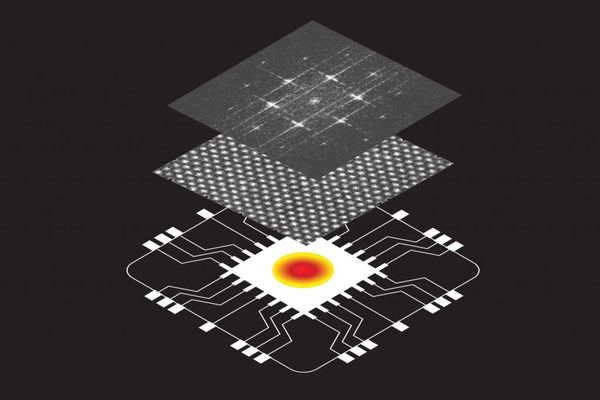
The heat is off: UCLA engineers develop world's most efficient semiconductor material for thermal management
"New material draws heat away from hotspots much faster than current materials, which could lead to dramatic improvements in computer chip performance and energy efficiency Working to address “hotspots” in computer chips that degrade their performance, UCLA engineers have developed a new semiconductor material, defect-free boron arsenide, that is more effective at drawing and dissipating waste heat than any other known semiconductor or metal materials. This could potentially revolutionize thermal management designs for computer processors and other electronics, or for light-based devices like LEDs. The study was recently published in Science and was led by Yongjie Hu, UCLA assistant professor of mechanical and aerospace engineering. Computer processors have continued to shrink down to nanometer sizes where today there can be billions of transistors are on a single chip. This phenomenon is described under Moore’s Law, which predicts that the number of transistors on a chip will double about every two years. Each smaller generation of chips helps make computers faster, more powerful and able to do more work." [...]
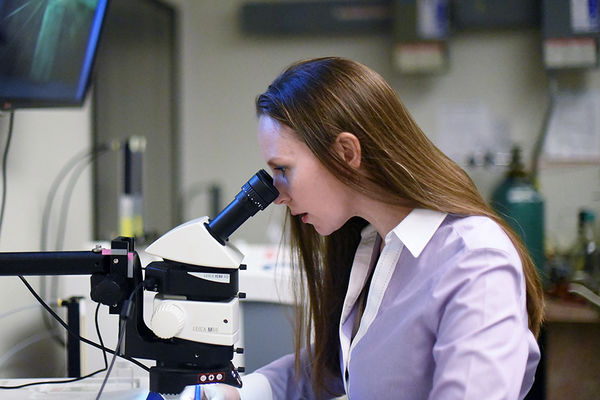
Fantastic plastics: Research collaboration could reshape injection molding
"As Ralph Colby peers at the microscope image in front of him, he thinks he can make them out — "shish kebabs," as polymer scientists call them. Nobody knows for sure what they are, but these shapes that appear at seemingly unpredictable times when certain plastics cool have a big impact on the overall properties of plastics. It's not a big deal when a plastic fork breaks, but if a bearing cage on an airplane were to break, it could put people in danger. Colby has partnered with two other Penn State researchers to get a better basic understanding of how plastics cool from a liquid to solid shape in injection molding. Their work, which involves some new techniques, is already helping industry partners. “Ultimately, we’re hoping to come away from our research with a better basic understanding of how these polymers crystallize during flow, and also the knowledge to put this information into injection molding software,” said Colby, professor of materials science and engineering." [...]
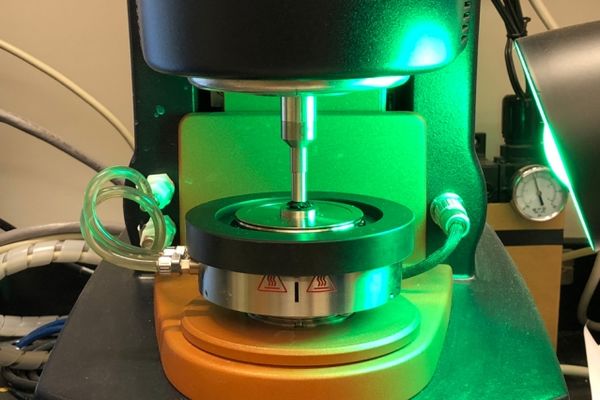
Light-controlled polymers can switch between sturdy and soft
"New material reversibly changes its structure in response to different wavelengths of light. MIT researchers have designed a polymer material that can change its structure in response to light, converting from a rigid substance to a softer one that can heal itself when damaged. “You can switch the material states back and forth, and in each of those states, the material acts as though it were a completely different material, even though it’s made of all the same components,” says Jeremiah Johnson, an associate professor of chemistry at MIT, a member of MIT’s Koch Institute for Integrative Cancer Research and the Program in Polymers and Soft Matter, and the leader of the research team. The material consists of polymers attached to a light-sensitive molecule that can be used to alter the bonds formed within the material. Such materials could be used to coat objects such as cars or satellites, giving them the ability to heal after being damaged, though such applications are still far in the future, Johnson says. The lead author of the paper, which appears in the July 18 issue of Nature, is MIT graduate student Yuwei Gu." [...]
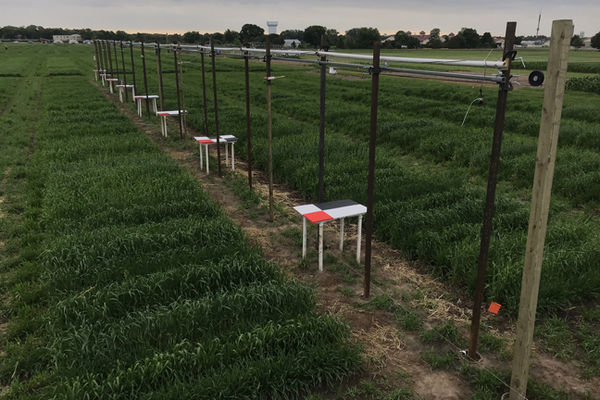
Research Brief: UMN researchers develop DIY field imaging system
"Farmers and plant breeders can now build their own automated field camera track system to collect data on dynamic plant traits, such as crop lodging and movement, as it’s happening in the field to help reduce losses in crop yield. A team of University of Minnesota researchers led by Alex Susko, doctoral candidate and member of the Precision Agriculture Center in CFANS, developed the system to capture videos of plant movement under very windy conditions as well as stem failure or lodging. Lodging occurs when a plant falls or bends over due to high winds, disease, wet soil, excess nitrogen in the soil, machinery, or animals and can lead to losses in crop yield. “Field camera track systems exist, such as the PhenoSpex FieldScan, but it’s proprietary and primarily designed for container crop phenotyping. Our system is open source, less expensive, and easier to construct,” said Susko. “It’s my hope that a system like this opens the possibility for the discovery of novel plant phenotypes.” The study’s findings, published in the Hardware X Journal, expanded on work by Peter Marchetto, an assistant professor in the Department of Bioproducts and Biosystems Engineering, who used a camera across a field on parachute cord to take photos of lodging." [...]
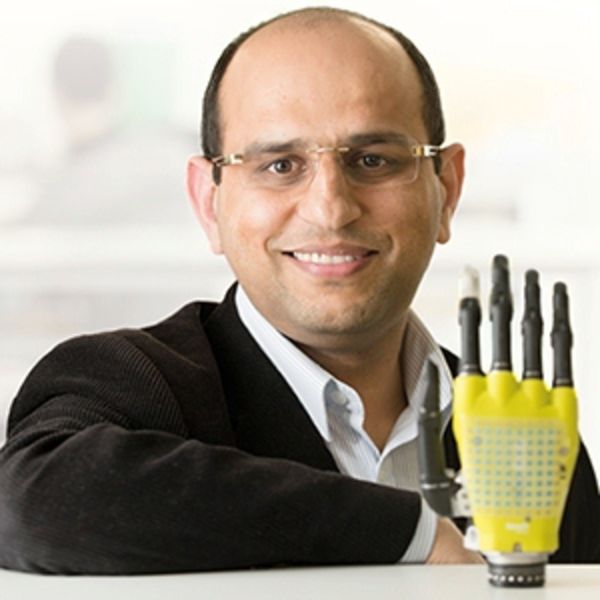
Solar Supercapacitor Could Power Future Of Wearable Sensors
"A new form of solar-powered supercapacitor could help make future wearable technologies lighter and more energy-efficient, scientists say. In a paper published in the journal Nano Energy, researchers from the University of Glasgow’s Bendable Electronics and Sensing Technologies (BEST) group describe how they have developed a promising new type of graphene supercapacitor, which could be used in the next generation of wearable health sensors. Currently, wearable systems generally rely on relatively heavy, inflexible batteries, which can be uncomfortable for long-term users. The BEST team, led by Professor Ravinder Dahiya, have built on their previous success in developing flexible sensors by developing a supercapacitor which could power health sensors capable of conforming to wearer’s bodies, offering more comfort and a more consistent contact with skin to better collect health data. Their new supercapacitor uses layers of flexible, three-dimensional porous foam formed from graphene and silver to produce a device capable of storing and releasing around three times more power than any similar flexible supercapacitor. The team demonstrated the durability of the supercapacitor, showing that it provided power consistently across 25,000 charging and discharging cycles. They have also found a way to charge the system by integrating it with flexible solar powered skin already developed by the BEST group, effectively creating an entirely self-charging system, as well as a pH sensor which uses wearer’s sweat to monitor their health." [...]
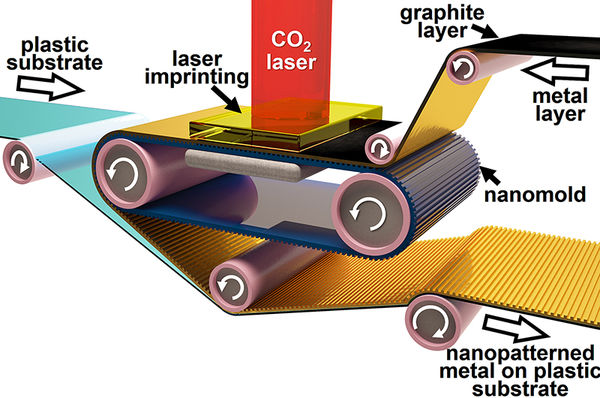
Future electronic components to be printed like newspapers
"A new manufacturing technique uses a process similar to newspaper printing to form smoother and more flexible metals for making ultrafast electronic devices. The low-cost process, developed by Purdue University researchers, combines tools already used in industry for manufacturing metals on a large scale, but uses the speed and precision of roll-to-roll newspaper printing to remove a couple of fabrication barriers in making electronics faster than they are today. Cellphones, laptops, tablets, and many other electronics rely on their internal metallic circuits to process information at high speed. Current metal fabrication techniques tend to make these circuits by getting a thin rain of liquid metal drops to pass through a stencil mask in the shape of a circuit, kind of like spraying graffiti on walls. "Unfortunately, this fabrication technique generates metallic circuits with rough surfaces, causing our electronic devices to heat up and drain their batteries faster," said Ramses Martinez, assistant professor of industrial engineering and biomedical engineering. Future ultrafast devices also will require much smaller metal components, which calls for a higher resolution to make them at these nanoscale sizes." [...]
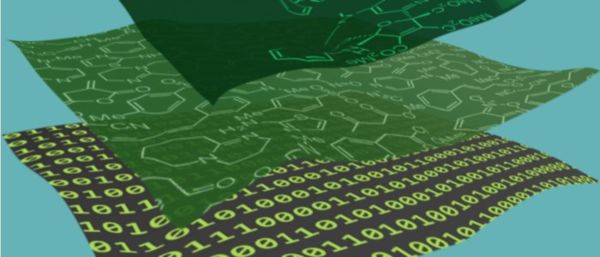
Robot Chemist Discovers New Molecules And Reactions
"A new type of artificial-intelligence-driven chemistry could revolutionise the way molecules are discovered, scientists claim. In a new paper published today in the journal Nature, chemists from the University of Glasgow discuss how they have trained an artificially-intelligent organic chemical synthesis robot to automatically explore a very large number of chemical reactions. Their ‘self-driving’ system, underpinned by machine learning algorithms, can find new reactions and molecules, allowing a digital-chemical data-driven approach to locating new molecules of interest, rather than being confined to a known database and the normal rules of organic synthesis. The result could be a decreased cost for discovering new molecules for drugs, new chemical products including materials, polymers, and molecules for high tech applications like imaging. The team demonstrated the system’s potential by searching around 1000 reactions using combinations of 18 different starting chemicals. After exploring only around 100, or 10%, of the possible reactions, the robot was able to predict with over 80% accuracy which combinations of starting chemicals should be explored to create new reactions and molecules." [...]
Documentação
A documentação é parte essencial do processo de aprendizagem e a Internet além de artigos interessantes de explorar também tem alguma documentação em formato PDF interessante de ler. Todos os links aqui apresentados são para conteúdo disponibilizado livremente pelo editor do livro.

HackSpace magazine #9
"Tools: they help us give form to our ideas but which ones to you need? We take a look at 50 of our favourite maker tools to help you equip your workshop. We also build an auto-targeting water cannon and look into how electricity works. Make your own a drum machine The challenges of building a giant LED cube Pick the best inertia measurement modules Use your maker skills to help others And much, much more! " [...]
Projetos Maker
Diversos Projetos interessantes.

Utrasonic Avoidance Robot Using Arduino
"In this tutorial, I will show you how to make your own obstacle avoiding robot! We will use the Arduino UNO board and an ultrasonic sensor. If the robot detects an object in front of it, with the help of a small servo motor, it scans the area left and right in order to find the best way to turn. It has also a notification LED, a buzzer to play a tone when an object is detected and a button for changing the function of the robot (stopped/moving forward). It's very easy to make it! " [...]

Pwm2pwm
"Change the input PWM signal to another PWM signal output with an Encoder. This project born when i bought my first laser cutter. It's not easy to set the PWM power, at the first time, according to the material you want to cut. So i want to create a small device to change the power during the execution. " [...]

Low Cost Automation With ESP01
"Today, well discuss automation using ESP01 with 16 relays. This is a super cheap design model where you can multiply the modules and get up to 128 relays, as it is possible to put up to eight port expanders in this microcontroller. In our circuit, you will have an application on a smartphone that communicates with the ESP01. It will have an expander with 16 ports, each connected to a relay. We also have a 3v3 adjustable source. Well therefore control a 16-channel relay module using ESP01 through the Android application, which I make available to you." [...]
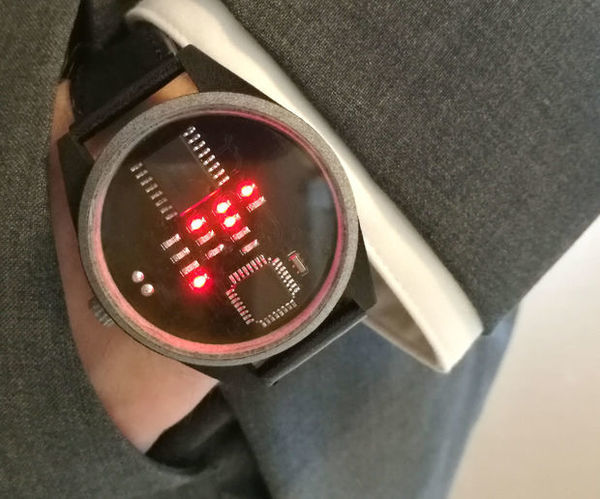
Binary Wrist Watch
"I've always been fascinated by both interesting ways of telling the time and binary code. It's amazing the amount of information can be stored in simple ON/OFF signals. I knew I wanted a new wrist watch so why not combine binary code with a wrist watch, and do it as an awesome DIY project? This is the kind of idea that lodged itself in the back of my mind. Always present and constantly evolving until it reached a saturation point where the project had to be done! There were several challenged that had to solved to make it the watch of my dreams." [...]

Arduino_Inductance_ And_capacitance_meter V 0.1
"A digital electronics component_meter based on arduino, that mesure inductance and capacitance with an lcd menu display ( more options will be added later :) Introductions : Heres a really useful and easy project you can do with an Arduino. If you have a hard time reading the color bands on Induction like me and can't find out the real value of the capacitor, this project is perfect for you. " [...]

Control Every Device From Everywhere with aRest
"Want to control every device from everywhere with a mobile phone or PC just for $5? Follow this ready-to-use guide! Hi! I decided to write this project for newbies. This is my first IoT Project (I created it more than a year ago) and I wanted to share it with everyone because there are lots of very chaotic tutorials in the net about this. I hope to help people that are in trouble as I was." [...]
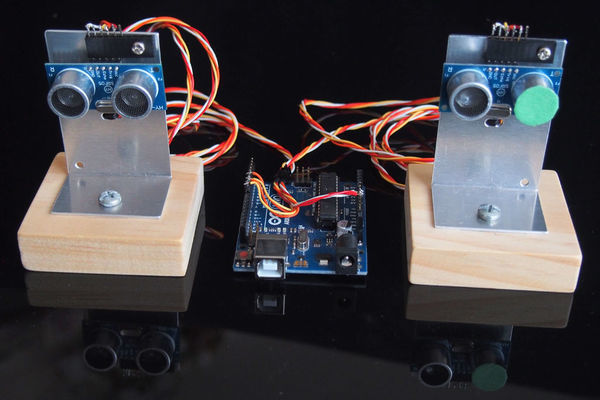
Dual Sensor Echo Locator
"This instructable explains how to pinpoint the location of an object using an Arduino, two ultrasonic sensors, and Herons formula for triangles. There are no moving parts. Herons formula allows you to calculate the area of any triangle for which all sides are known. Once you know the area of a triangle, you are then able to calculate the position of a single object (relative to a known baseline) using trigonometry and Pythagoras. The accuracy is excellent. Large detection areas are possible using commonly available HC-SR04, or HY-SRF05, ultrasonic sensors." [...]
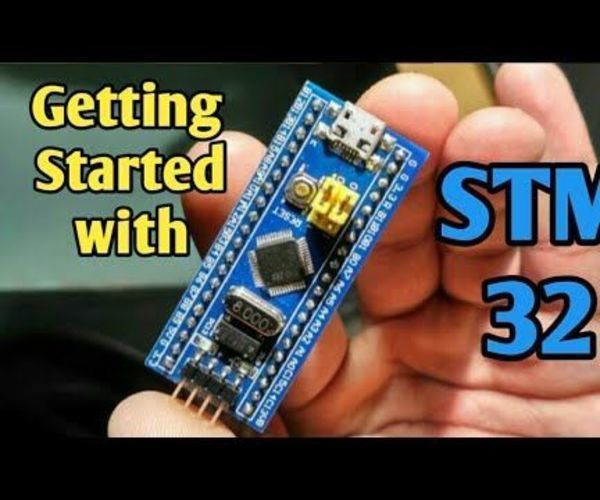
Getting Started With Stm32 Using Arduino IDE
"STM32 Is quite powerful and popular board supported by Arduino IDE. But to use it you need to install the boards for stm32 in Arduino IDE so in this instructables i'll tell how to install stm32 boards and how to program it. " [...]
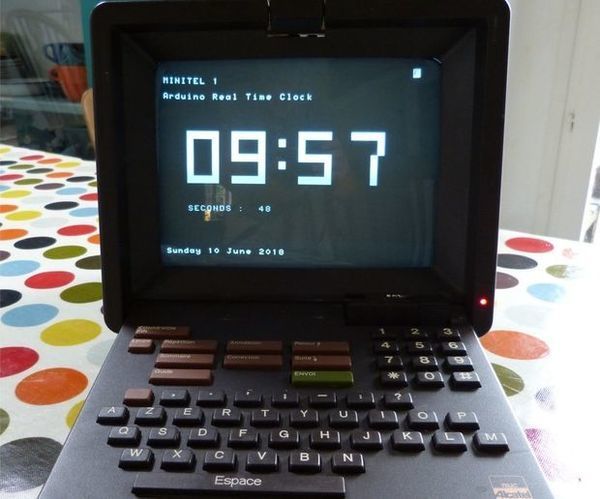
Minitel Real Time Clock
"Created in 1978 by France Telecom, Minitel was an information retrieval and texting service. Considered to be the most successful network prior to the world wide web. 30 years on in 2008 the network finally closed. (There is lots of info about this on Wiki.) overnight these terminals became obsolete. Consisting of a CRT screen keyboard, modem and some shift registers, these "dumb" terminals are not capable of processing data." [...]
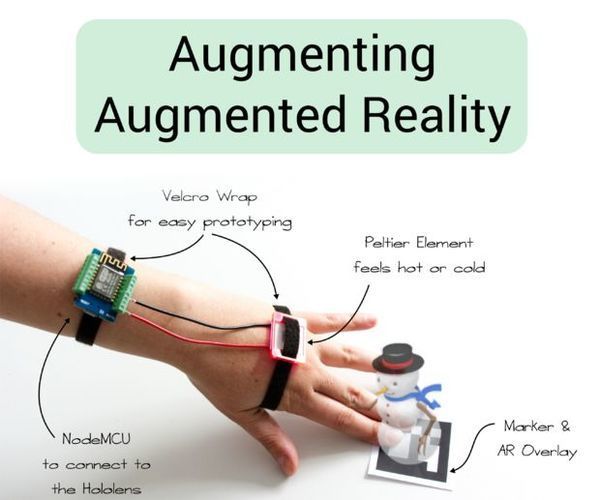
Augmenting Augmented Reality
"Todays Augmented Reality (AR) devices enable users to interact almost naturally with their surroundings, e.g., by pinning digital content onto real-world objects. However, current AR display are mostly limited to optical and video see-through technologies. Nevertheless, extending Augmented Reality (AR) beyond screens by accommodating additional modalities (e.g., smell or haptics) or additional visuals (e.g., peripheral light) has recently become a trend in HCI. In this tutorial, we provide beginner level, hands-on instructions for augmenting an Augmented Reality application using peripheral hardware to generate multi-sensual stimuli. " [...]

Helium Air Quality Sensor
"A Helium-based air quality sensor and solar setup. As environmental concerns and awareness increase, I decided to build and deploy an array of wireless, self-contained, weather-resistant, solar-powered air quality sensors, also known as WSPAQS. The sensor array measures CO2 levels and VOCs. (What's a VOC, you ask? See below as it's rather long.) It also has a voltage/current sensor to keep track of the solar charge." [...]
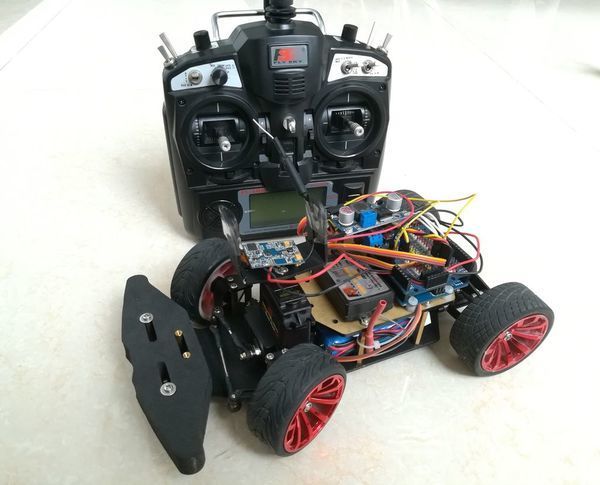
Differential Steering Car With Arduino
"Hey, everyone, I'm wsurging, and I'm sending out my new car tutorial again. This is almost the same structure as the previous steering gear, but the rear wheel has added a RC model differential. Unfortunately, there is no With the addition of a shock absorber system, this car model has been ready for a long time, but it has not been sent out and it is here today. The car model is also the rear drive structure. The front wheel is responsible for steering and the rear wheel is driven. Compared with the previous one, the car with the differential has a quicker steering, and the car model also uses the high-speed motor RS380." [...]
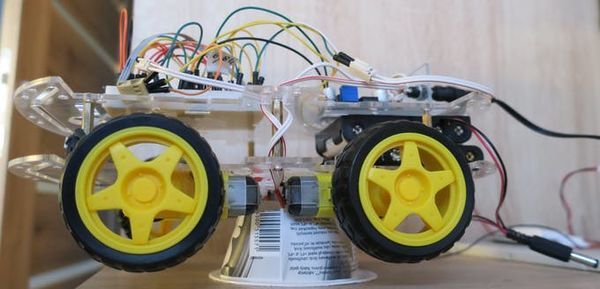
Arduino Car
"Simple car control by webpage with an awesome Knight Rider effect! In this tutorial, I will show you how to build a simple Wemos NodeMCU, or other ESP-based, car system. Over the course of it, I will use the term Arduino for this device. Before starting the course, I suggest you read the articles “quick start” for both the website and Arduino. Parts listed above, make sure to read comments next to the part Connections Chassis We start with assembling the robot chassis. Engines on the right and left side are connected to each other and we supply the power cable to both at once." [...]
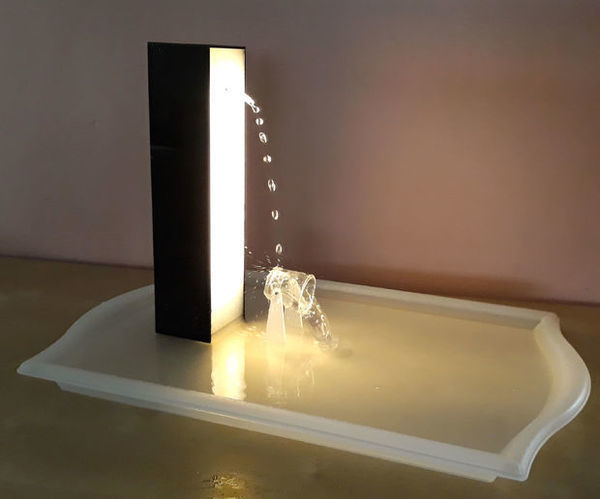
JF Time Fountain
"Harold "Doc" Edgerton, an American electrical engineer and photographer was noted for creating high-speed photography techniques. He developed and improved strobes and used them to freeze objects in motion so that they could be captured on film by a camera. The 'Piddler' machine he created more than 50 years ago uses a stroboscopic technique to form optical illusions of levitating water droplets, slowing the downward flow of water as well as reversing the flow of water to move upwards to defy the laws of gravity. This inspired us to come up with our design of a Time Fountain. With the water droplets in reverse, moving against gravity, it looks like the fountain is going back in time. Hence it is coined as a 'Time Fountain'." [...]
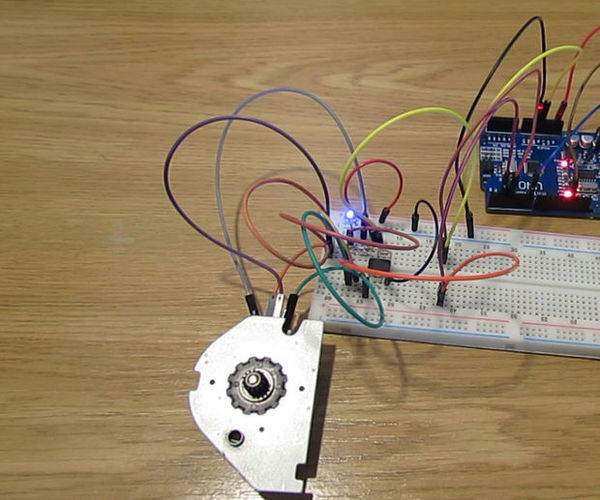
Using Stepper Motor As Rotary Encoder
"I want to tell you how to make incremental encoder from stepper motor. When we turning shaft of stepper motor it works like generator. It generates certain impulses on its coils. After some signal processing, we get same impulses as incremental encoder. This encoder has one problem, it can drop steps if you turning very slowly. But for many applications, it doesn't matter." [...]

Arduino Automated Parking Garage
"A fully automated smart car parking system- powered using just a power bank!!! An Arduino Automated Car Parking System that is too easy and too fun to make. When a car arrives it shows the number of empty slots (if available) and then opens the gate. if there is not any empty slot then the gate does not open. Amazing thing is that the whole project can just be POWERED using a POWER BANK!! Watch the video for the full tutorial." [...]
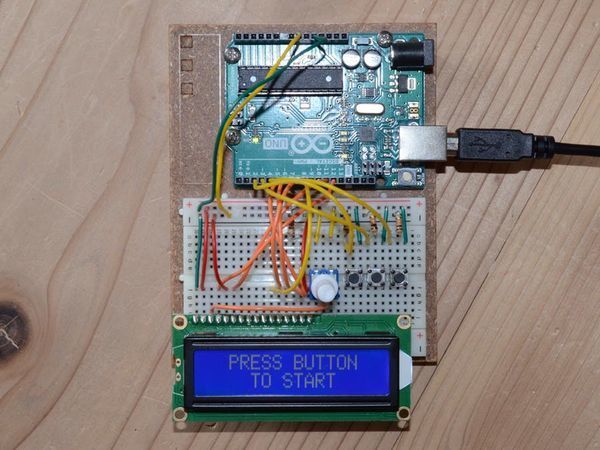
Bicycle Odometer and Speedometer with 99 Lap/Period Recorder
"Bicycle odometer and speedometer showing distance traveled, average and current speed (in km/hr), time and can store up to 99 laps. Story Description This is an odometer and speedometer for bicycles which keeps track of distance traveled (in km), time traveled in hours, minutes and seconds, average speed (in km/hr) and maximum speed attained during any one minute period (in km/hr). It can keep track of a maximum 99 laps/cycling periods. It can be built with parts from the Arduino Starter Kit, with the exception of a Hall sensor and enclosure box which need to be purchased separately. Motivation I cycle quite a bit to stay in shape and want to know how far I cycle, average and current speed, etc. I can not justify buying a device that does this (with probably many features I don't need!)" [...]

Raspberry Pi Amateur Radio Digital Clock
"Overview Amateur Radio Operators (aka HAM Radio) use 24 hour UTC (Universal Coordinated Time) for much of their operation. I decided to build a digital clock using the low-cost TM1637 4 digit displays and a Raspberry Pi Zero W instead of just a GUI clock. (Hardware is fun!) The TM1637 driven display has four 7 segment leds with a center colon : between two sets of digits. It requires two wires to drive the display plus 5V + and Ground for a total of 4 wires. For this particular project, I wanted the Raspi to get its time from NTP (Network Time Protocol) servers via the Internet." [...]
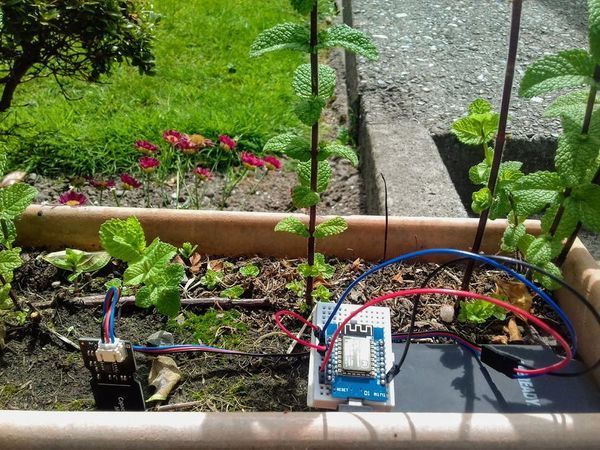
Python/MicroPython Sensor Logger with Google Sheets
"Wemos D1 mini takes sensor readings and sends a POST request containing data to Flask Server on RPi 3. Data is then written to Google Sheet. A system for recording sensor values to a Google Sheet. Making use of HTTP requests to communicate between the micro-controller and the server, and utilising gspread to write data to online spreadsheet. You will need to follow the instructions on the following link to set up access to your spreadsheet. http://gspread.readthedocs.io/en/latest/oauth2.html pin D0 to RST: Must be connected to wake from Deepsleep." [...]
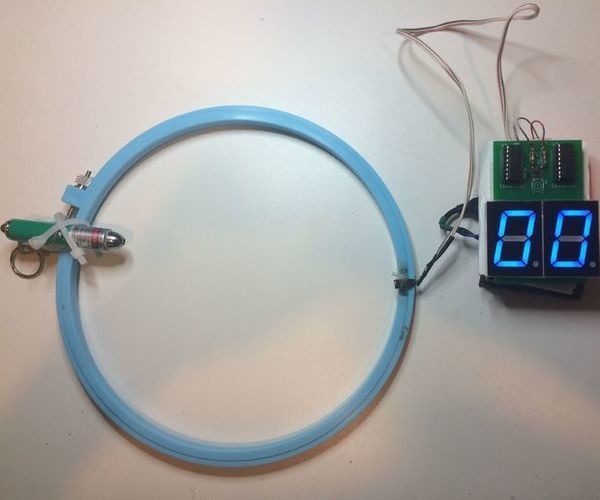
Arduino Score Counter
"This Arduino Score Counter will count the number of baskets you make using the CD4026BE Decade Counter/Divider IC to count the number of baskets made and display that number on a 7 segment display. An Arduino paired with a photoresistor (acting as a laser tripwire for the ball). which then send a signal to the first CD4026BE IC adding a single digit to the 7 segment display" [...]

DIY Arduino Load Bank Lipo Storage/Discharger Station
"Sometimes you charge your lipos but didn't flew, so you need storage the lipos. I found in the flite test website one simple project, so my project basically its a remix. My changes: Added a SSD relay; More Load resistor; Cooler fan; XT60 and balance connectors; Small change in the code for better storage voltage value. " [...]
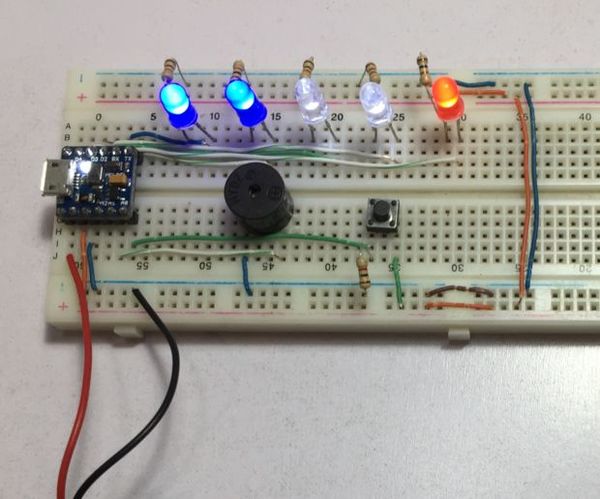
Digital Hourglass Using PICO
"We all have started working on a project for an hour, only to end up working on it for 3 hours unknowingly. And today, we're going to fix this problem, and we'll do all of that in less than an hour! We will create an alarm that uses LEDs and a buzzer to alarm you when the time interval finishes. It will also have multiple checkpoints that keep you aware of how much time passed. And we'll be using PICO, LEDs, and a buzzer to get this done. " [...]
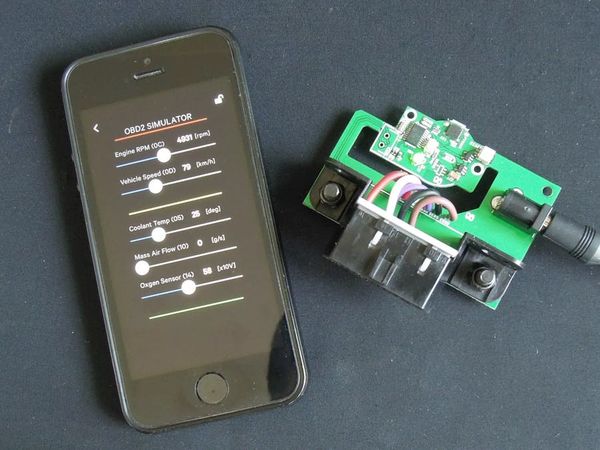
OBD2 Simulator
"With this simulator, you can develop an OBD2 device and related service on your desk without going to the garage. It was troublesome to have to prepare a vehicle when making OBD2 device and related services. With this OBD2 simulator, you can develop OBD2 equipment on the desk without going to the garage. " [...]

Ardubuino (an Arduboy Compatible Clone)
"Arduboy is an open source credit card size gaming console that has an active community not only on its software where alot of people develop their own game for the platform but also on its hardware where there are also alot of people came up with their own custom arduboy hardware. I personally cannot afford to buy the Arduboy console but fortunately I have the Components to build one. so I came up with two prototype on a perf board and then stepping it up with my Custom PCB that I got from here. This project also a stepping stone for me because this is my first time making a PCB. Now I want to share the fun and excitement on making this project which only took few hours to build with some basic soldering skill because all the components are trough hole components. " [...]

Tiny Machine-Code Monitor
"This project is a machine-code monitor that you program from a hexadecimal keypad using a simplified instruction set: It's a good project for learning about the fundamentals of machine code, and will also appeal to people who like programming challenges. The simplified machine code, called MINIL, is designed to be easy to learn and understand. It's similar to the Little Minion Computer [1] used in some universities to teach students about machine code. The same method could be used to emulate other simple processors, such as the SC/MP, 6800, 8080, or 6502. Introduction In the early days of microprocessors the only way a hobbyist or engineer could try out a chip was to get one of the manufacturer's evaluation boards that allowed you to program in machine code using a hexadecimal keypad and seven-segment displays. Some early examples were the National Semiconductor SC/MP kit, the Motorola D2 kit for the 6800 [2], and the KIM-1 board from MOS Technology Inc. for the 6502 [3]." [...]
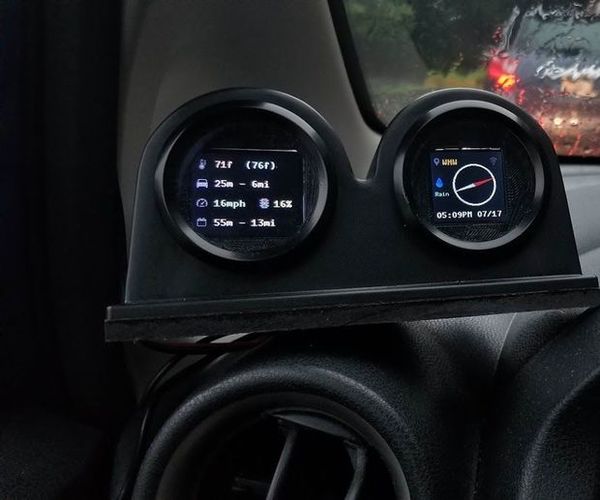
TripComputer - GPS Trip Computer & Weather Module for Your Vehicle
"A cool raspberry pi project that uses the GPS breakout module and 2 small Digole displays to have a navigation computer on your dash. " [...]
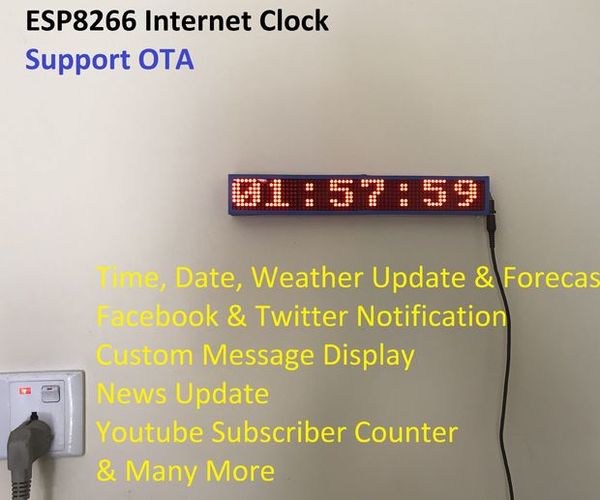
ESP8266 Internet Clock With Weather Update & Many More (No RTC)
"In this instructable, I am going to share how I made an ESP8266 based hackable Internat Clock. The clock is able to show: Time, Date, Weather updates (e.g. temperature, humidity, pressure, clouds, sunrise, sunset), Weather forecast, Facebook like and notification, Youtube subscriber counter Customize message and many more The firmware of the clock can be updated over wifi. No physical connection is required. No RTC module or Arduino is required. " [...]
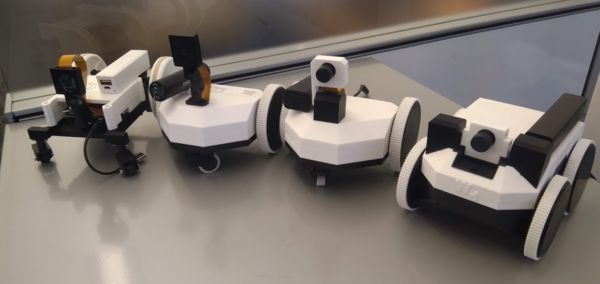
Watney is a low-cost 3D-printable FPV rover
"Watney is a low-cost Raspberry Pi-enabled rover made of readily available parts. The majority of Watney's parts are 3D-printable. It has a Python and a REST APIs. Watney is all-wheel drive, with each side powered by a geared motor. Because of that, it turns like a tank by spinning each side in opposite directions. It drives best on smooth surfaces, like hardwood, linoleum and tile." [...]

Smart Plant IoT
"Auto watering the plant and tracking plant's health through Helium and Microsoft Azure IoT. Introduction Gardening might be a fun hobby for some, but for many others it's much of a hassle to deal with. In this article I am writing a simple guide on how to build a smart IoT plant that would send sensor data to Azure IoT Hub and storing over Azure SQL via Azure functions, at the same time both auto and remotely control water for the plant. Helium IoT Hub connects to Azure IoT Hub in a seamless fashion, in this article we will explain how the entire process works. Since the entire project is serverless, the only code needed for the entire process to work is just Azure Function and Arduino code. Step 1: Gather Components We are building a simple product using Arduino UNO SEEED Grove Base shield Helium Atom + Helium Element with Helium Arduino Breakout board A pump Temperature/Humidity sensor, Moisture Sensor, UV Light Sensor Grove OLED Display" [...]
Multiple Independent NeoPixel Rings
"So I built this project to see the 12 LED Pixel working. I found this one with 16 here. And I saw this integrated bracelet , but I wanted to see how different rings, different sizes would work independent from eachother. So instead of connecting Digital Output from one board into the Digital Input on the other board as the second picture suggests, my goal was to have one dedicated DI on each board. " [...]

WiFi Paddle Boat.
"Summer is in full swing in Oklahoma and the kids, grandkids, nieces, nephews and, well, just about everyone we know is in Lake Zumwalt to cool down. My wife has purchased enough pool toys to fill Lake Zumwalt, so I figured I would join the pool toy fray with WiFi Paddle Boat. WiFi Paddle Boat is a paddle boat controlled via wifi using a smart phone, tablet or other touch enabled device. WiFi Paddle Boat creates a wifi access point (much like the small sport cameras) that you connect to via your wifi enabled device wifi settings. Then, using your wifi touch enabled device web browser, you simply navigate to the WiFi Paddle Boat web page and off you go! The controls for WiFi Paddle Boat are identical to those of my "Lady Buggy" and "Santa Sleigh" designs so it's easy for the grandkids to operate." [...]
That's all Folks!


